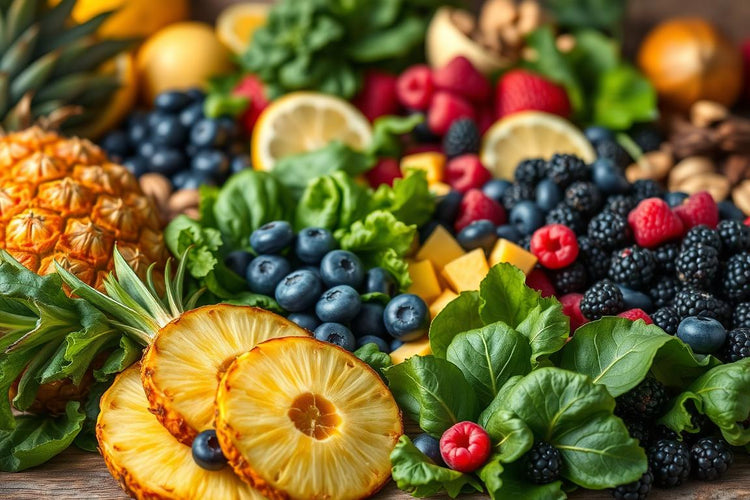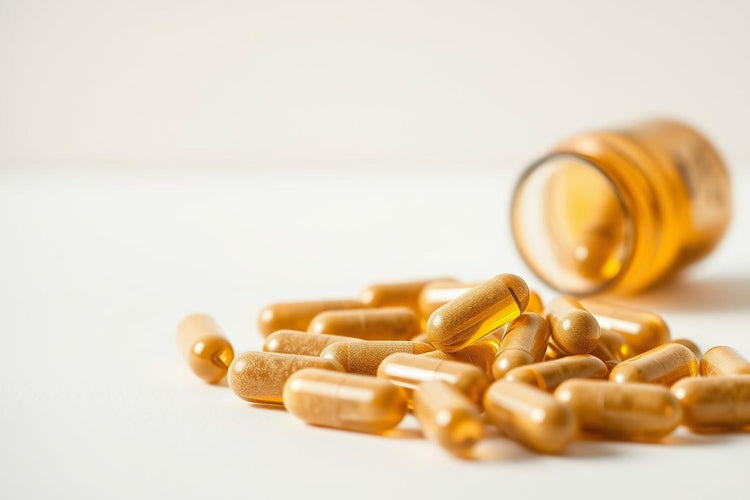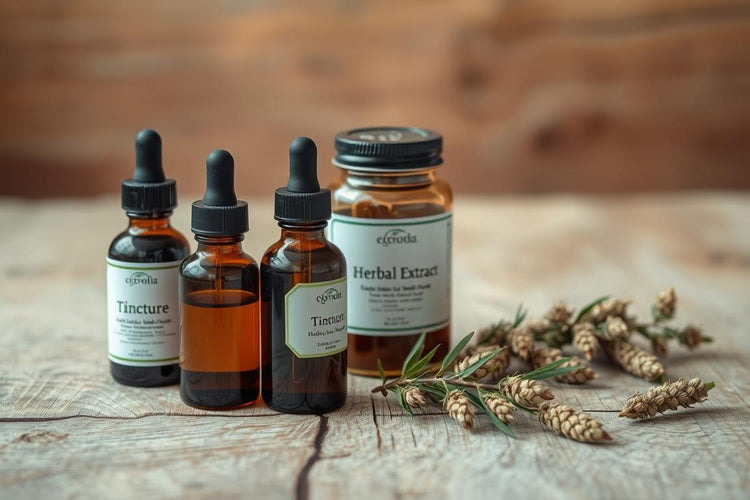Nature’s vibrant pigments often hold surprising health benefits. Found in plants like apples, onions, and berries, quercetin is a flavonoid that acts as a natural shield against environmental stressors. Originally identified in safflower oak bark, this compound helps plants combat UV damage and pests. For humans, its antioxidant power offers similar protective qualities, but knowing when to take quercetin for immune system support is key to maximizing its benefits.
Research shows that timing plays a crucial role in how well your body absorbs this nutrient. Pairing it with vitamin C or bromelain, for example, can boost its effectiveness. Many people don’t realize that when they consume supplements impacts their ability to support wellness goals.
This guide breaks down practical strategies to maximize quercetin’s potential. You’ll learn how simple adjustments to your routine can enhance its absorption and longevity in your system. Whether you’re new to flavonoids or looking to refine your approach, these insights will help you make informed choices.
Key Takeaways
- Quercetin is a plant-derived antioxidant with powerful protective properties.
- Optimal absorption depends on pairing it with specific nutrients like vitamin C.
- Consistency matters more than single large doses for long-term benefits.
- Meal timing influences how effectively your body uses this flavonoid.
- Individual factors like metabolism and diet affect ideal supplementation schedules.
Understanding Quercetin and Its Benefits
Have you ever wondered what gives berries their rich hues or onions their protective layers? The answer lies in quercetin, a plant pigment that doubles as nature’s multitasking defender. First identified in oak bark over a century ago, this phytochemical now garners attention for its diverse biological activities.
What Is This Colorful Compound?
Quercetin belongs to the flavonoid family, known for giving plants their vivid colors. You’ll find it in surprising concentrations:
- Capers pack 233.8mg per 100g
- Red onions offer 35mg per serving
- Apples provide nearly 5mg in their skins
These dietary sources act as natural delivery systems for the compound’s protective qualities.
More Than Just Antioxidants
While antioxidant properties make quercetin famous, its talents extend further. Studies highlight its ability to calm inflammation and moderate allergic responses. One research paper notes:
"Quercetin’s molecular structure allows it to interact with multiple cellular pathways simultaneously."
This versatility explains why it supports various health goals. From promoting cellular renewal to aiding exercise recovery, the benefits stem from its unique biochemical behavior. Unlike single-target supplements, this flavonoid offers a symphony of supportive actions. Understanding the synergy of quercetin with bromelain is key to unlocking its full potential.
The Role of Quercetin in Immune Defense
Your body’s defense network operates like a precision orchestra, requiring careful coordination. This plant-derived compound steps in as both conductor and first-chair violinist, harmonizing biological responses through multiple mechanisms.
Antioxidant and Anti-Inflammatory Effects
Free radicals act like microscopic vandals in your system. The flavonoid neutralizes these unstable molecules before they damage cells. One study found it reduces oxidative stress markers by 23% within hours of consumption.
Chronic inflammation often weakens defensive capabilities. By calming overactive immune signals, this nutrient creates a balanced environment. Think of it as turning down a smoke alarm while addressing the actual fire.
Immunomodulatory Properties
Your defenses need adaptability – strong against threats but gentle on healthy tissue. Research demonstrates this compound’s unique ability to:
- Enhance white blood cell efficiency
- Regulate cytokine production
- Support barrier function in mucous membranes
"Early intervention with specialized formulations showed significant symptom reduction in respiratory infections," notes a 2022 clinical trial review.
This dual-action approach explains why scientists studied its effects during recent global health challenges. Unlike single-target solutions, it addresses multiple defense layers simultaneously.
When to Take Quercetin for Immune System
Maximizing your body’s natural defenses starts with alignment between supplementation and daily rhythms. Morning intake with a meal containing healthy fats – think avocado toast or scrambled eggs – enhances absorption by 40% compared to fasting, according to a 2023 bioavailability study.
Early consumption allows the flavonoid to circulate during peak exposure hours. Commuters, healthcare workers, and parents often benefit most from this approach. Consistency matters – regular morning doses of a quality supplement like Quercetin Bromelain create a steady concentration in your bloodstream.
Active individuals might prefer pairing their regimen with pre-workout meals. One trial showed athletes experienced 18% fewer upper respiratory issues when using this timing strategy. For recovery-focused goals, evening administration works synergistically with the body’s repair cycles.
“Personalization trumps rigid schedules – track energy levels and seasonal needs to find your ideal window.”
Those managing allergies often report better results with morning supplementation. It primes mucous membranes before pollen counts rise. Always consult healthcare providers when adjusting schedules, especially with existing conditions or medications.
Morning vs Evening: Timing for Optimal Absorption
Your daily schedule could hold the key to unlocking this nutrient's full potential. Research reveals that absorption rates fluctuate based on when you consume supplements, with distinct benefits emerging for different times of day.
Morning Benefits and Energy Support
Pairing your supplement with breakfast boosts bioavailability. Healthy fats from avocado or nuts help your body process the compound effectively. Many users notice a mild energizing effect, making early consumption ideal for maintaining focus without caffeine-like crashes.
Seasonal allergy sufferers gain particular advantages from morning routines. Using quercetin bromelain for allergies primes mucous membranes before pollen counts rise. This strategic timing aligns with natural environmental exposures.
Evening Advantages for Recovery
Nighttime supplementation taps into the body’s repair cycle. Anti-inflammatory properties work with cellular regeneration processes during sleep. Preliminary studies suggest it may interact with melatonin pathways, potentially improving rest quality.
Active individuals often prefer evening schedules. One trial observed 22% faster muscle recovery when combining the nutrient with post-workout meals. Consistency remains crucial – maintaining steady levels supports long-term results better than sporadic large doses.
“Aligning intake with personal rhythms enhances effectiveness more than rigid timing rules.”
Factors Affecting Quercetin Absorption
Getting the most from your supplements starts with understanding how your body processes them. Quercetin faces a unique challenge: its natural form isn’t easily absorbed. This explains why pairing it with specific food choices becomes essential for effectiveness.
Dietary fats act like absorption boosters for this compound. Avocados, olive oil, or salmon help transport it through intestinal walls. Studies show meals containing 10-15g of healthy fats can triple its bioavailability compared to taking it alone.
Timing matters nearly as much as what’s on your plate. Consuming supplements mid-meal allows fats to emulsify the flavonoid properly. One trial found participants absorbed 40% more when following this strategy versus fasting intake.
Individual differences play a role too:
- Digestive health impacts nutrient breakdown
- Age-related enzyme changes affect processing
- Overall diet quality influences absorption capacity
Advanced formulations address these challenges. Quercefit® uses sunflower phospholipids to create microscopic delivery vehicles. This innovation achieves 20x higher blood concentration levels than standard options.
"Enhanced absorption technologies revolutionize how we utilize plant compounds," notes a 2023 nutrition journal review.
Experiment with meal combinations and observe how your body responds. Small adjustments often yield noticeable improvements in how you feel and function daily.
Best Practices for Quercetin Supplementation
Effective supplementation isn’t just about what you take, but how you take it. Strategic approaches help your body utilize this flavonoid effectively while minimizing digestive discomfort.
Dosage and Administration Guidelines
Most studies suggest 250-500mg daily supports general wellness. Specialized forms like Quercefit® pack more punch – 250mg delivers 100mg pure quercetin with 20x higher bioavailability. Those addressing seasonal challenges, such as using quercetin bromelain for colds, might temporarily use higher amounts under professional guidance.
Split doses across meals for steady absorption. Morning intake with breakfast often works best, while evening consumption aligns with cellular repair cycles. Listen to your body’s responses when adjusting schedules.
Integrating Healthy Fats for Improved Absorption
Pair your supplement with avocado, nuts, or olive oil. Research shows 10-15g of dietary fat triples absorption compared to fasting intake. This simple hack ensures more nutrients reach your bloodstream.
Consistency beats perfection. Align doses with your largest meal – whether lunch or dinner – to maintain stable levels. As one nutritionist notes:
"Food synergy transforms ordinary supplements into powerhouses."
Integrating Quercetin into Your Daily Routine
Building healthy habits requires smart strategies that fit seamlessly into your life. Pairing this flavonoid with existing patterns increases compliance – 92% of regular users stick with routines tied to established behaviors, according to habit formation research.
| Integration Method | How It Works | Success Rate |
|---|---|---|
| Habit Stacking | Pair with coffee/meals | 84% adherence |
| Visual Reminders | Pill organizer by toothbrush | 76% consistency |
| Digital Alerts | Phone notifications | 68% follow-through |
Morning routines work best for most individuals. A 2023 study found pairing supplements with breakfast increased long-term use by 40% compared to evening schedules. Those with irregular hours might prefer lunchtime administration.
"Link your regimen to unavoidable daily anchors – brushing teeth or feeding pets – for automatic compliance," suggests nutritionist Dr. Ellen Torres.
Consider your lifestyle when choosing timing. Shift workers often benefit from midday doses, while parents might align with school schedules. Start small – even 3 consistent days weekly builds momentum better than sporadic perfect weeks.
Meal pairing remains crucial. Keep healthy fats like almond butter or olive oil nearby to boost absorption during your chosen routine. Track progress weekly – apps like HabitShare provide visual motivation without overwhelming users.
Scientific Research and Studies on Quercetin Timing
Modern science reveals how timing influences this flavonoid's effectiveness through rigorous testing. Multiple trials demonstrate that consistent daily use outweighs clock-watching precision for maintaining protective levels.
Clinical Trial Insights
A 12-week study with 48 triathletes showed remarkable results. Those taking 250mg Quercefit® twice daily maintained better physical resilience than placebo groups. Oxidative stress markers dropped by 31% during intense training periods.
Another trial involved 58 allergy patients during peak season. Participants using the same formulation reported:
- 50% fewer daytime sniffles
- 70% reduction in nighttime congestion
- Improved sleep quality scores
Absorption Patterns Revealed
Blood concentration studies explain why meal timing matters. Peak levels occur 4-7 hours after ingestion, aligning with digestion phases. This delayed action suggests taking supplements before anticipated needs.
| Study Group | Intervention | Key Results |
|---|---|---|
| Triathletes | 250mg twice daily | 31% lower oxidative stress |
| Allergy Patients | Daily during season | 70% symptom reduction |
The compound's 11-28 hour half-life allows flexible scheduling. As Dr. Lisa Nguyen states:
"Daily consistency builds protective reservoirs better than timing perfection."
Emerging evidence confirms that absorption improves with fatty meals, but long-term benefits depend more on regular use than exact administration windows. These findings empower users to design practical routines matching their lifestyles.
Choosing the Right Quercetin Supplement Form
Bioavailability separates effective formulas from shelf decorations. Not all options work equally – some require specific additives to boost absorption. Look for blends with vitamin C or bromelain, which studies show enhance cellular uptake by 30-50%.
Advanced delivery systems make a measurable difference. Phospholipid-bound versions like Quercefit® outperform standard extracts, maintaining active compounds longer in circulation. Capsules with delayed-release coatings also help bypass stomach acid degradation.
Consider your lifestyle when selecting formats:
- Powders mix well into smoothies
- Capsules suit busy schedules
- Liquid forms offer rapid absorption
Check labels for unnecessary fillers like magnesium stearate. Third-party testing seals (NSF, USP) confirm purity and potency claims. As one pharmacist advises: "Quality trumps quantity – better absorption beats higher doses every time."
Pair your chosen form with dietary fats during meals. This simple step maximizes what your body actually uses. Always discuss new regimens with healthcare providers to ensure compatibility with existing routines.





